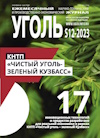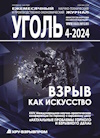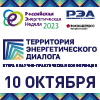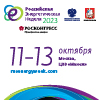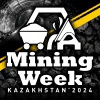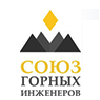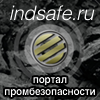COAL PREPARATION
Original Paper
UDC 543.632.4: 546[35+36+65+161] © T.G. Cherkasova, D.A. Barantsev, 2023
ISSN 0041-5790 (Print) • ISSN 2412-8333 (Online) • Ugol’ – Russian Coal Journal, 2023, № S12, pp. 70-74
DOI: http://dx.doi.org/10.18796/0041-5790-2023-S12-70-74
Title
Hydrofluorination PRODUCTS OF COAL PROCESSING WASTES FROM THE BEREZOVSKAYA CENTRAL PROCESSING PLANT
Authors
Cherkasova T.G. 1 , Barantsev D.A. 1
1 T.F. Gorbachev Kuzbass State Technical University, Kemerovo, 650000, Russian Federation
Authors Information
Cherkasova T.G., Doctor of Chemical Sciences, Professor, Director at the Institute of Chemical and Oil and Gas Technologies, e-mail: ctg.htnv@kuzstu.ru
Barantsev D.A., Assistant at the Institute of Chemical and Oil and Gas Technologies e-mail: kemche@yandex.ru
Abstract
Against the background of the growing volumes of waste from the coal industry, the direction of finding technological solutions for their processing becomes relevant. Elemental analysis of these wastes showed the presence of rare and rare earth elements in industrially significant concentrations, which allows the use of waste as raw materials. The key stage in processing is the opening of mineral raw materials. Coal industry waste mainly consists of silicon-containing minerals (quartz, clay minerals, feldspar) with high chemical resistance, for the opening of which high temperatures and chemically active reagents (sodium hydroxide, sodium carbonate, sulfuric acid, etc.) are required. This paper presents the results of the opening of carbon enrichment waste using ammonium hydrofluoride in an aqueous solution at the boiling point of water. The results of the distribution of ele? ments in hydrofluorination products are presented. White soot with a silicon oxide content of 87.5% by weight was isolated, the remaining solution was evaporated to obtain ammonium fluoride in which rubidium and caesium were concentrated (the degree of extraction reaches 85.22% by weight, and 89.65% by weight, respectively). It is established that 90% of the mass, the sum of rare earth elements (REE) remains in the cake.
Keywords
Coal mining and processing wastes, Ultimate analysis, White soot, Hy? drofluorination, Concentration, Rare earth elements, Rubidium, Cesium.
References
1. Kharionovsky A.A., Grishin V.Yu., Kolikov K.S. & Udalova N.P. Problems of using coal mining waste. Gornyj informatsionno-analiticheskij byulleten, 2021, (10), pp. 45-55. (In Russ.). DOI: 10.25018/0236-1493-2021-101-0-45. 2. Cherkasova T.G., Shabanov E.A., Bushuev A.A., Tikhomirova A.V. & Barantsev D.A. Studying properties of the Kuzbass coal consumption and preparation wastes to be used as feedstock for construction materials manufacturing. Ugol’, 2023, (10), pp. 89-95. (In Russ.). DOI: http://dx.doi. org/10.18796/0041-5790-2023-10-89-95. 3. Cherkasova T.G., Pilin M.O., Tikhomirova A.V. & Barancev D.A. Determination of composition of coal processing wastes of the Berezovskaya Central Concentrating Mill. Ugol’, 2023, (9), pp. 90-95. (In Russ.). DOI: 10.18796/0041- 5790-2023-9-90-95.
4. Krasnov O.S. & Salikhov V.A. Assessment of the impact of the integrated use of man-made waste on the resource cycles of the region (on the example of the Kemerovo region). Vestnik Tomskogo gosudarstvennogo universiteta. Economika, 2018, (41), pp. 85-94. (In Russ.). DOI: 10.17223/19988648/41/6.
5. Dmitrak Yu.V., Tsidaev B.S., Dzaparov V.Kh. & Kharebov G.Z. Mineral resource base of non-ferrous metallurgy of Russia. Vector GeoNauk, 2019, Vol. 2, (1), pp. 9-18. (In Russ.).
6. Novikov N.I. & Salikhov V.A. The main directions and prospects for the development of the mineral resource base of non-ferrous and rare metals in the world and Russia. Vestnik Tomskogo gosudarstvennogo universiteta. Economika, 2015, (2), pp. 138-150. (In Russ.). DOI: 10.17223/19988648/30/13.
7. Taggarta R.K., Howerb J.C. & Hsu-Kima H. Effects of roasting additives and leaching parameters on the extraction of rare earth elements from coal fly ash. International Journal of Coal Geology, 2018, (196), pp. 106-114. DOI: 10.1016/j.coal.2018.06.021.
8. Ruberlan G.S., Carlos A.M. & Eder D.O. Selective precipitation of rare earth from non-purified and purified sulfate liquors using sodium sulfate and disodium hydrogen phosphate. Minerals Engineering, 2019, (134), pp. 402- 416. DOI: 10.1016/j.mineng.2019.02.028.
9. Bochevskaya E.G., Karshigina Z.B., Sargelova E.A. & Abisheva Z.S. Technology of complex processing of highly siliceous and hard-to-enrich mineral ore to obtain a concentrate of REM and highly dispersed silicon dioxide. Vestnik nauki i obrazovaniya, 2017, (12). Vol. 1, pp 13-18. (In Russ.). DOI: 10.20861/2312-8089-2017-36-007.
10. Krysenko G.F., Epov D.G. & Medkov M.A. Ammonium hydrodifluoride is a promising reagent for opening and concentrating useful components of polymetallic and technogenic raw materials. Proceedings of the Kola Sci? entific Center of the Russian Academy of Sciences. Chemistry and Materials Science, special issue: II All-Russian Scientific Conference with international participation dedicated to the memory of V.T. Kalinnikov “Research and de? velopment in the field of chemistry and technology of functional materials”, 2015, (5), pp. 76-80. (In Russ.).
11. Rimkevich V.S., Pushkin A.A., Girenko I.V. Complex processing of silicacontaining raw materials with the extraction of silica and silicon. Gornyj informatsionno-analiticheskij byulleten, 2018, (9), pp. 73-80. (In Russ.). DOI: 10.25018/0236-1493-2018-9-0-73-80.
12. Medkov M.A., Krysenko G.F. & Epov D.G. Complex processing of datolite concentrate with ammonium hydrodifluoride. Vestnik DVO RAN, 2010, (5), pp. 63-66. (In Russ.).
13. Smorokov A.A., Kantaev A.S., Bryankin D.V. & Miklashevich A.A. Develop? ment of a method for low-temperature desilinization of polymetallic slag with NH4HF2 solution. Izvestiya vuzov. Khimiya i khimicheskaya technologiya, 2022, (65), pp. 70-76. (In Russ.). DOI: 10.6060/ivkkt.20226508.6608.
14. Smorokov A.A., Kantaev A.S., Bryankin D.V. & Miklashevich A.A. Develop? ment of a method for low-temperature desilination of leucoxene concen? trate of the Yareg deposit with a solution of ammonium hydrodifluoride. Izvestiya vuzov. Khimiya i khimicheskaya technologiya, 2022, (65), pp. 127-133. (In Russ.). DOI: 10.6060/ivkkt.20226502.6551.
15. Smorokov A.A., Kantaev A.S., Bryankin D.V. & Miklashevich A.A. Develop? ment of a method for low-temperature desilinization of activated zirconium concentrate with NH4HF2 solution. Izvestiya Tomskogo polytechnicheskogo universiteta. Engineering georesoursov, 2022, Vol. 333, (4), pp. 27-36. (In Russ.). DOI: 10.18799/24131830/2022/4/3459.
16. Medkov M.A., Krysenko G.F. & Epov D.G. Ammonium hydrodifluoride is a promising reagent for complex processing of mineral raw materials. Vestnik DVO RAN, 2011. (5), pp. 60-65. (In Russ.).
Acknowledgements
The research was financially supported by a grant from the Russian Ministry of Education and Science (Agreement No 075-15-2022-1193).
For citation
Cherkasova T.G. & Barantsev D.A. Hydrofluorination Products of coal processing wastes from the Berezovskaya Central Processing Plant. Ugol’, 2023, (S12), pp. 70-74. (In Russ.). DOI: 10.18796/0041-5790-2023-S12-70-74.
Paper info
Received November 1, 2023
Reviewed November 15, 2023
Accepted November 30, 2023


